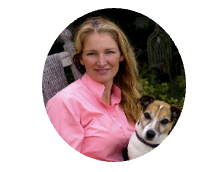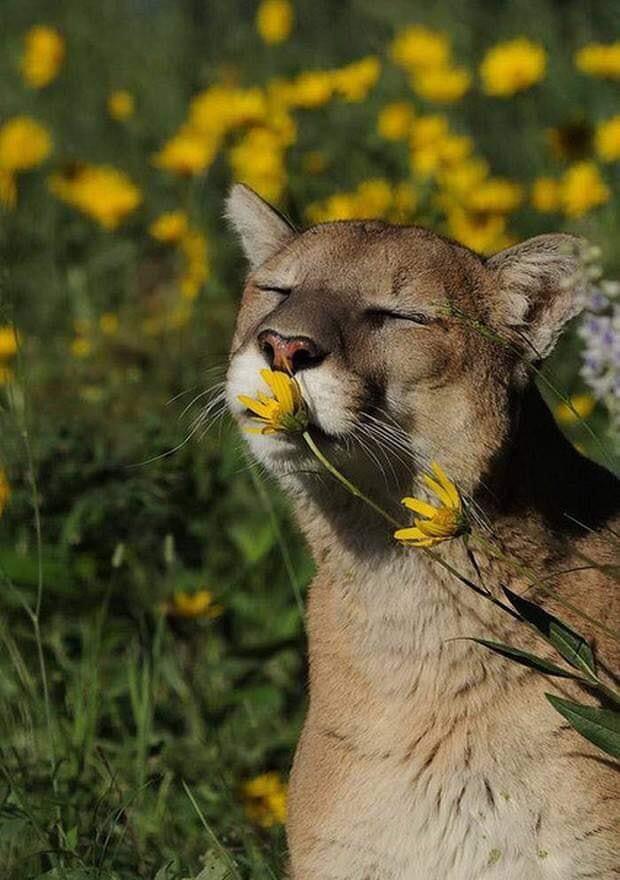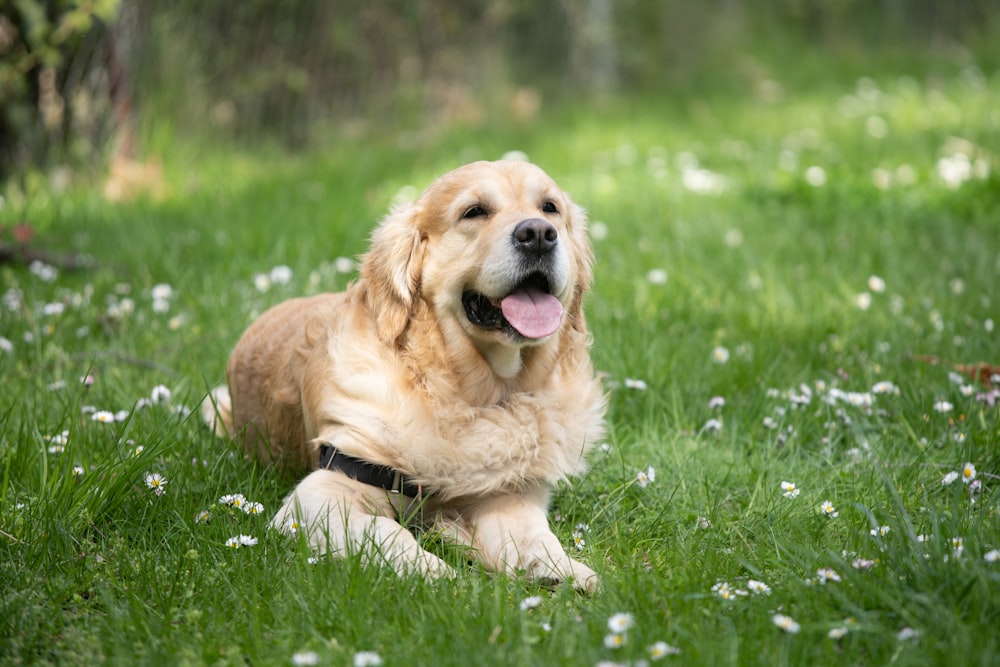By: Lola Michelin LMP, LAMP, SAMP
Scent is one of the strongest sensory experiences for most animals, especially dogs and horses. A dog’s sense of smell is exponentially greater than a human’s; depending on the breed it can be 10,000x (short-nosed breeds like pugs) to 100,000x (bloodhounds) more acute. When a dog inhales, the functions of smell and respiration are separated into two different areas of the nose so that smell can be thoroughly analyzed. Kittens and puppies do not develop their sense of sight or hearing until days, or even weeks, after birth, and they rely entirely on smell and touch to navigate. Horses roaming in wild bands use their sense of smell to find water, recognize family members, and detect predators for up to a mile.
Many animals are equipped with a special filtering structure called a Jacobsen’s organ that is anatomically capable of separating the chemical nature of a smell into all of its constituents. Imagine the delicious smell of an apple pie coming out of the oven. You and I smell pie, but your dog smells apples, flour, butter and each spice that was added. Similarly, hounds are even able to store a single scent and distinguish it from an entire forest of smells, even when that smell is hours or days old. Beyond just regular smalls, recent research indicates that dogs can detect cancer cells within tissue samples with over 90% accuracy.
With all that in mind, including essential oils (EOs) and other aromatics as part of a health and wellness practice for animals is a wise move, but one that requires special consideration. Animals can be easily overwhelmed by EOs and other scents. Thus, products must be of the highest quality to avoid undesirable reactions.
Harley’s Story
My first experience with essential oils and animals involved a horse with a history of aggression and tactile hyperesthesia (extreme sensitivity to touch). As an animal bodyworker, I had spent nearly three decades working on various species of animals including horses, dogs and zoo animals, and I had never before encountered an animal so averse to contact. His dedicated owner had tried everything at her disposal and upon recommendation, had reached out to me and my colleague Joan Sorita for help. As I entered his stall, I first noticed his sullen posture. He immediately set to pinning his ears, grinding his teeth and keeping one hind leg cocked and ready to kick out. As I worked to establish a relationship with him through Reiki and gentle tapping, Joan offered him an array of small glass bottles to sniff. He passed his nostrils across each small vial held carefully in her outstretched hand. One elicited a reaction of a curled lip and wide eyes. The next vial earned a quick sniff and a pinning of ears. When a small vial of Clary Sage essential oil was offered, he paused. He drew a small breath through the left nostril and his ears pricked forward in interest. He shifted and moved one nostril and then the other back and forth over the bottle. A prolonged blink of his eyes and a softening of his lips showed a promising interest. After several seconds poised over the bottle, he let out a heavy sigh and his head drooped toward the ground. He was able to remain relaxed throughout our session as long as she kept the oil available to him. The physiological response of his brain to the unique structure of that particular oil opened a door that had remained closed for years.
This was a classic example of the self-selection method that is a cornerstone of Joan Sorita’s work. Relating to her studies in Applied Zoopharmacognosy (the study of animal self-medication in the wild, we can observe animals, both domestic and wild, choosing specific plants and flowers to self-medicate or relieve physical or emotional discomfort. As practitioners, we can tap into this innate ability to seek and select specific plant medicines by offering and sequencing plant-based chemical signals in the form of essential oils, hydrosols (aqueous suspensions), dried or macerated herbs, and flower signatures.
How Essential Oils Translate from Humans to Animals
While the use of essential oils in massage for humans is common, one major difference is the person’s ability to provide verbal feedback and consent. With animals, the self selection method is key to improving accuracy and outcomes.
Another difference in using aromatics with animals is the method of exposure. EOs are often mixed with carrier oils and applied directly to the skin during massage, with caution in regards to allergies or sensitivities. With animals, surface dirt and fur can present a risk for topical application and certain oils can be caustic or photosensitive for animal skin. Knowing the chemistry of the oils is key in both choosing compounds that might help with a given set of symptoms or behaviors, and in choosing the proper mode of delivery. EO application in animals is largely done through inhalation. With proper training, many oils can also be offered topically in a diluted/hydrosol form, or given in food or water as a tincture. Knowing each oil’s chemical nature, physiological effects, preparation, and energetic signature is key. Oils that have one effect in humans can sometimes create a different physiological response in animals. For instance, Lavender is commonly the first oil people think of when they want to relax. However in some animals, particularly intact males such as stallions, it can act as a reproductive stimulant in certain environments.
Cats, in particular, can be sensitive to many essential oils and require careful application due to their unique metabolism. Hydrosols (dilute aqueous sprays) are recommended for cats and animals under the age of one year. However, even using essential oils in your home in a diffuser or in common household products can have a negative impact on cats and other pets. Your pets may be passively exposed to unsafe levels just through common household products such as soaps, candles and cleaners.
Below is a list of six EOs and hydrosols commonly used with animals along with some of their physiological and psychological properties.
- Sweet orange (Citrus sinensis)
Excellent for Digestive issues, teething, skin disorders and insect bites. Emotionally uplifting. - Vanilla absolute (Vanilla planifolia)
Can relieve anger and nervous tension that lead to biting, aggression or self-mutilation; emotionally nurturing, supports animals in season (during breeding cycles). - Yarrow (Achillea millefolium)
Used in cases of inflammation, urinary & kidney concerns, for wound healing and skin damage. - Rose (Rosa damascena)
Addresses anger, hormone balancing, trauma, holding onto aggressive memories; emotionally comforts the heart. - Violet leaf (Viola odorata)
Reduces fear or anticipation of pain, nervousness; emotionally decreases anxiety, can aid in anxiety relating to new home placement. - Angelica root (Angelica archangelic)
This oil is calming on both physical and emotional levels. It is used for skin disorders such as sarcoids; emotionally, it is encouraging for animals that are shut down or appear stoic in the face of stress or trauma
Quasi the Coatamundi
The trio of Angelica Root, Rose and Sweet Orange played a particularly transformative role in the life of one of my patients. Quasi was a coatamundi who lived with a troop of family members at a zoological park in Florida. Coatamundi or Coatis are South American mammals, similar to raccoons. Their social structure includes lots of mutual grooming and feeding one another, they even rub oils and sap from plants into each other’s coats to fend off bugs and parasites. Poor Quasi was born with a skin condition
that left him hairless and covered in bumps and lesions. His sister attended to him lovingly but other members of the troop refused to eat with him or engage in grooming activities. He was not thriving, and the zookeepers who cared for him were faced with the decision of making him live a solitary life or euthanizing him. Massaging him was going to be a trick as coatis can be aggressive and are equipped with sharp canines and claws. After some thought, I decided to try a different approach to providing him with bodywork.
My goal was to improve the health of his skin, reduce his and his sister’s stress and support his inclusion in the community. Using a selection of toothbrushes and paintbrushes, I massaged him through the bars of a small metal chute we coaxed him into with some tempting fruits. I offered him several EOs that I thought might help and he showed strong interest in Rose and Sweet Orange. I placed a few drops of the oil diluted in jojoba oil and fractionated coconut oil onto the toothbrushes and scrubbed him liberally. Jojoba oil is a natural wax and good for topical use as it does not clog pores or carry things across the skin easily, coconut oil was selected because of its antibacterial properties, its ability to fight yeast infections and its delicious scent and taste. His keeper repeated our sessions daily. Within days, his sister and a few other
members of the troop began showing interest in him, attracted by the smells. On the third day, I decided to add Angelica root to help his sister cope with her stress and I dipped a few of the paintbrushes in his pan of fruit to get some of the juices onto the few hairs on his arms and belly. The addition of Angelica root proved to be the magic alchemy. His troop instantly gathered around when he was returned to the group and began grooming him attentively. His sister brought him several gifts of grapes and blueberries, something she had only done in secret before. This was a program that could be easily adopted by
the keepers and allowed Quasi to remain with his troop until his passing. It was, for me, a tremendous lesson in the healing power of aromatherapy.
Training in Aromatics
Proper use of aromatics takes study and practice. In 2017, The Northwest School of Animal Massage (NWSAM) introduced an Animal Aromatic Science program for professional certification. The course combines online learning with hands-on practical training to ensure students get the science and practical experience they need. This program assists students in successfully adding aromatics to their animal practice and in better understanding how to bring this healing modality to their own pets or horses.
Recently, I visited Bermaga Farm to watch students finish up their professional training. As I sat at the back of the class, I marveled at the many ways the students chose how best to help the animals they were surrounded by. Three horses hung their heads over the stall grates in anticipation, a cat stretched lazily across the lap of one student who held a bowl of barley grass and hemp oil in offering. Four dogs were laying or sitting on beds next to students in the afternoon sun, sniffing from various vials of geranium, peppermint, copaiba and holy basil.
One horse in particular had arrived at Bermaga Farm for rehabilitation for physical and mental trauma. He had spent the last weeks sulking at the back of his stall, depressed and unwilling to engage with people or other animals. On the first day of class, he had regarded the students with suspicion and rejected oil after oil offered with a curled lip and a stomp of his massive front hooves. The day that I was in class, Katie Carter, a practitioner and student with a long history working in hydrotherapy and animal rehabilitation, stood by his door clasping a vial of rose essential oil. He stood several feet away with an eye turned in her direction. Gradually he inched closer and extended his neck cautiously. As his nostril passed over the bottle, an ear twitched forward involuntarily. He retreated with a deep inhale and stood blinking, before coming back over and taking a long drag from the bottle with each nostril. A heavy breath escaped him and he came back a third time, this time placing his head over the gate directly into the hands of the student. He stood that way for several minutes with all of us watching in silence. To those that don’t know horses well, it may have seemed like a very small concession. But for those who have looked into the eyes of the horse with deep affection, it was a small miracle in action. Fear was replaced with trust, depression was replaced with interest, and tension was replaced with breath.
Plant essences have special meaning for animals who spend so much of their lives immersed in scents. Horses can select specific plants down to a single blade of grass and in the wild. They choose plants that calm an upset stomach, fend off a parasite, or fight off a worm infestation as easily as you or I select items in the grocery store aisle. Aromatic Science includes not just the
use of EOs, but also preparations of plants such as barley grass, blue green algae, dried herbs, flowers, and flower signatures. Teas and tinctures made from hops or valerian can help with sleep disruption or anxiety (though competition animals may be restricted from competing during use). Raspberry leaf is commonly used to level moods in mares with ovarian concerns. Chaste berry is a powerful herb to help with PPID or Cushing’s, a common endocrine condition seen in older horses and dogs. Calendula and marigold petals can be used to line laying boxes for hens, they are calming to the hen and enhance the color and flavor of yolks. German Chamomile and Lavender can be suspended in a hydrosol to use in conjunction with acupressure along the Kidney meridian.
Endless opportunities exist to introduce these powerful plant medicines to animals in a safe way. Whether you are exploring ways to improve the health and longevity of your family pet, a four-legged athletic partner, or simply considering paths to diversify your bodywork practice, Animal Aromatic Science makes good “scents”.
For more information on courses and resources, follow the links offered below:
www.nwsam.com
http://bermagafarm.com/hme/home/
https://www.therapycornerstore.com/[perfectpullquote
About the Author
 Lola Michelin founded the Northwest School of Animal Massage in 2001. She has practiced animal massage for over 30 years and massage for people since 1998. A graduate of the Animal Science program at Michigan State University, she has work experience in both the veterinarian and zoological fields.
Lola Michelin founded the Northwest School of Animal Massage in 2001. She has practiced animal massage for over 30 years and massage for people since 1998. A graduate of the Animal Science program at Michigan State University, she has work experience in both the veterinarian and zoological fields.
Currently, Lola maintains a private practice for animals in addition to teaching and curriculum development. She consults with zoological park veterinary teams and owns Paxhia Farm, an equine retirement and rehabilitation facility on Vashon Island. She speaks and writes regularly on the topic of animal bodywork and is active in promoting standards of practice and legislation for the industry. Her interests include equestrian competition, rowing and sustainable farming. Her work has been featured in numerous magazines and she appears on television and radio as an advocate for animal therapies.
Director and Founder of the Northwest School of Animal Massage, Chairman of the Washington Animal Massage Association, 2000-2004, Founding Board Member, National Board of Certification for Animal Acupressure and Massage 2011-present.



